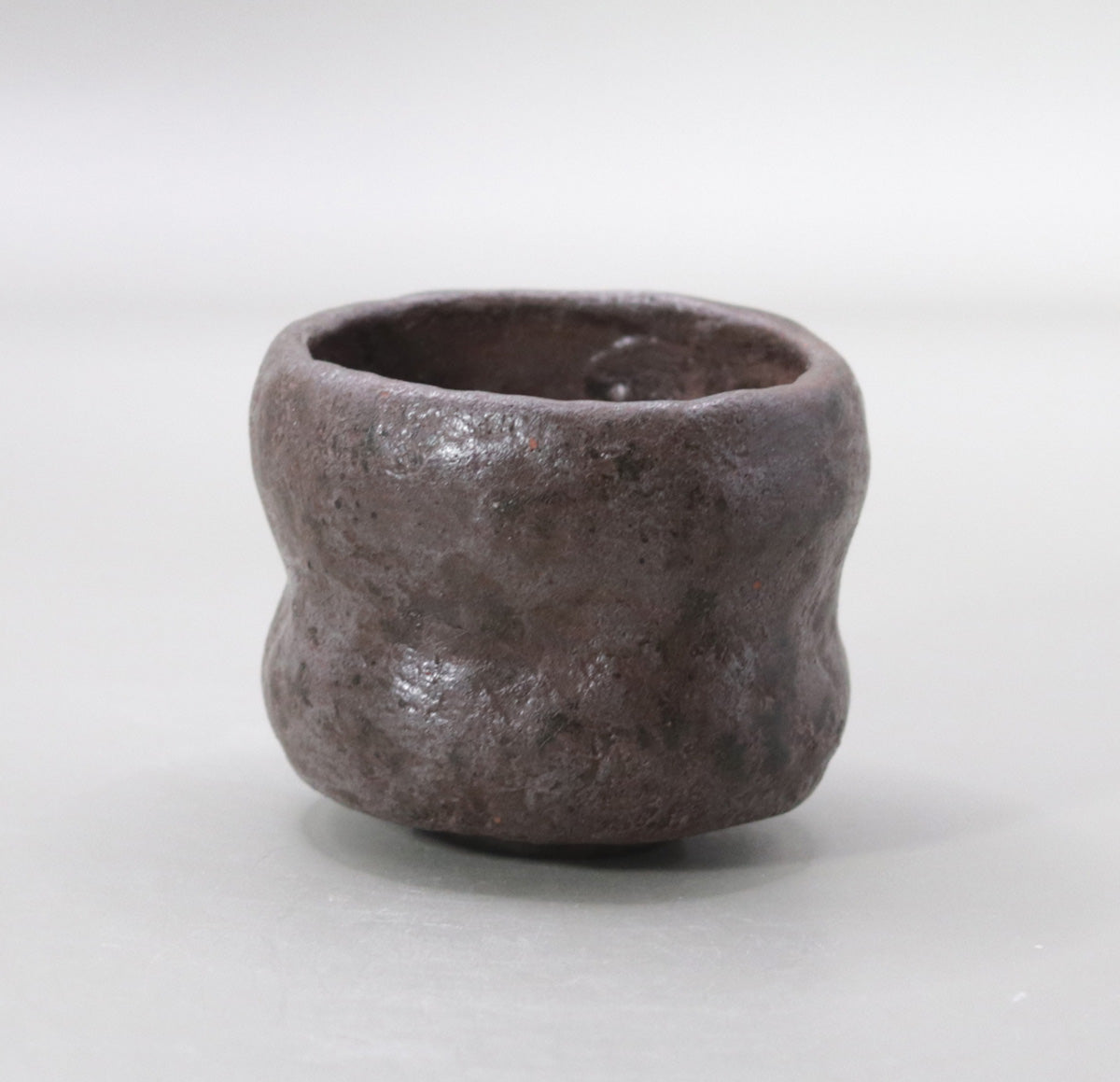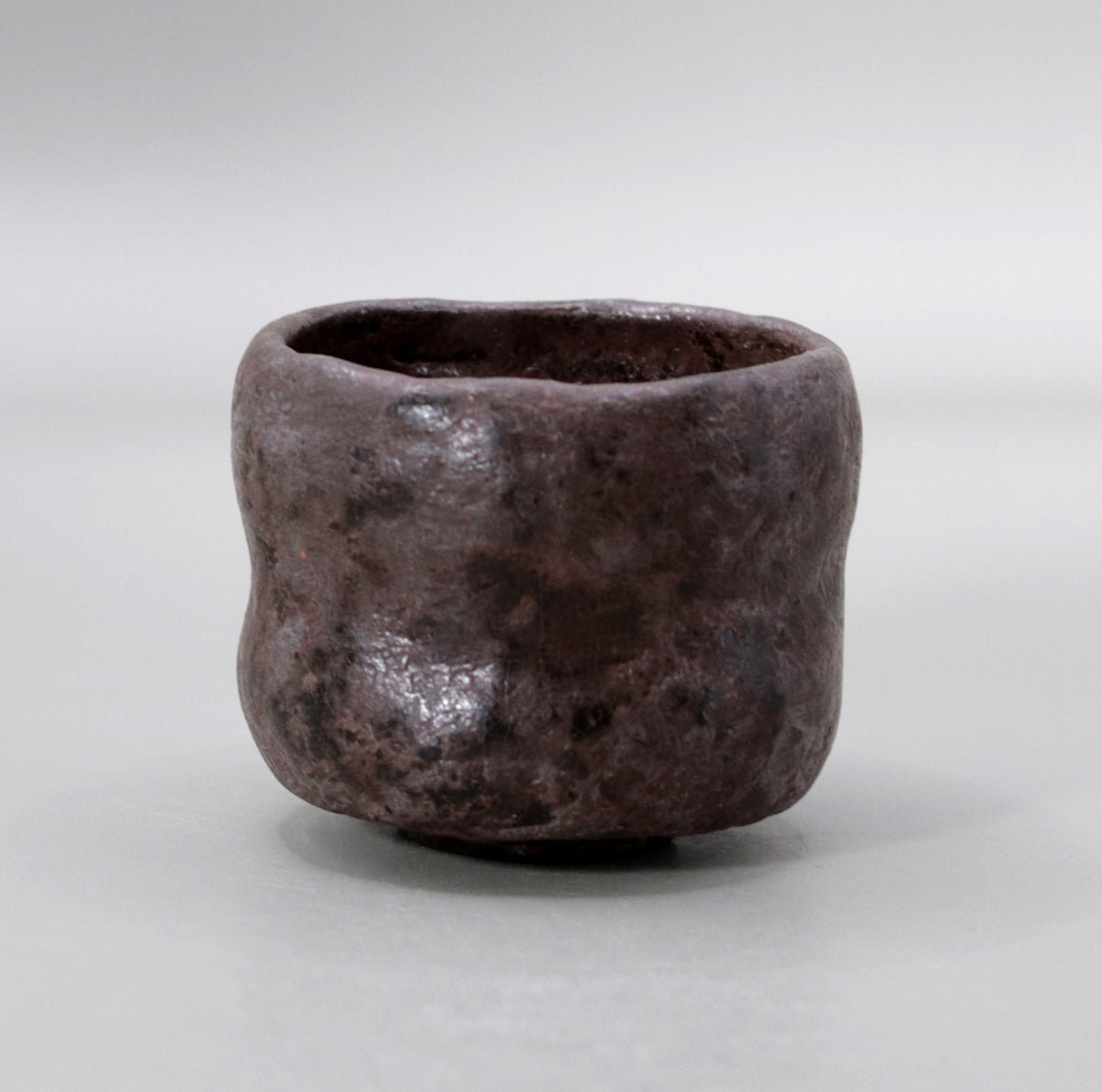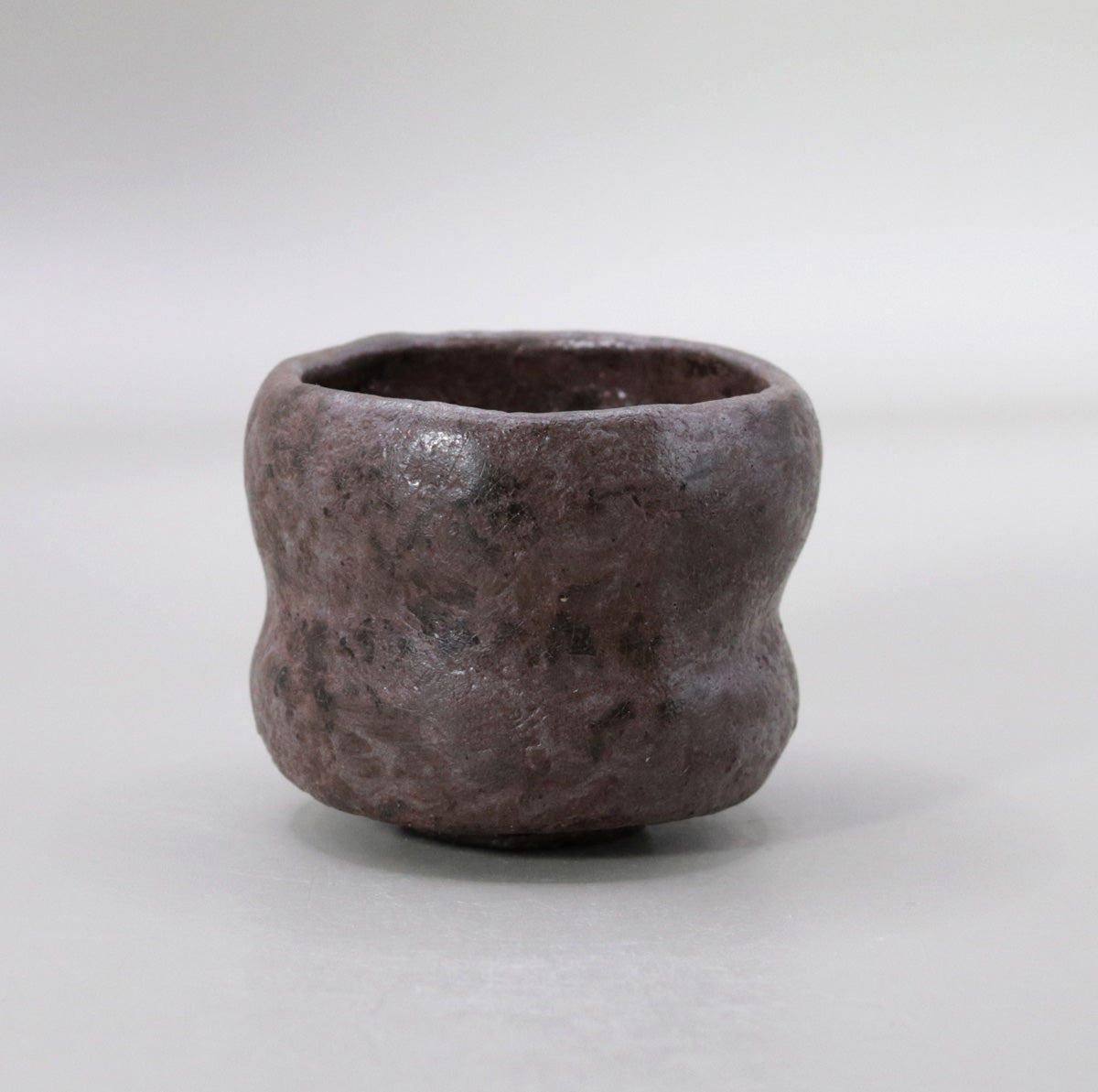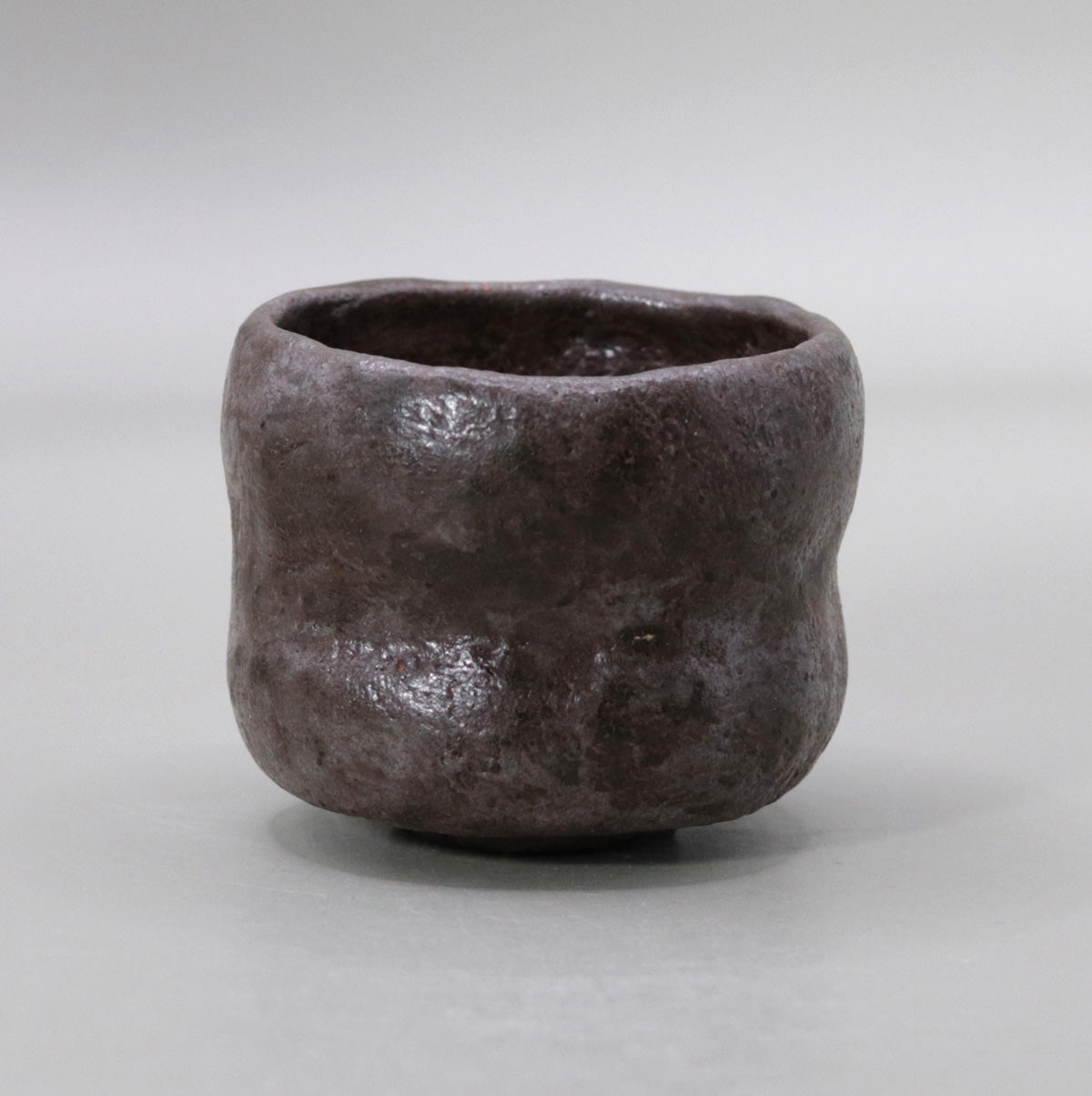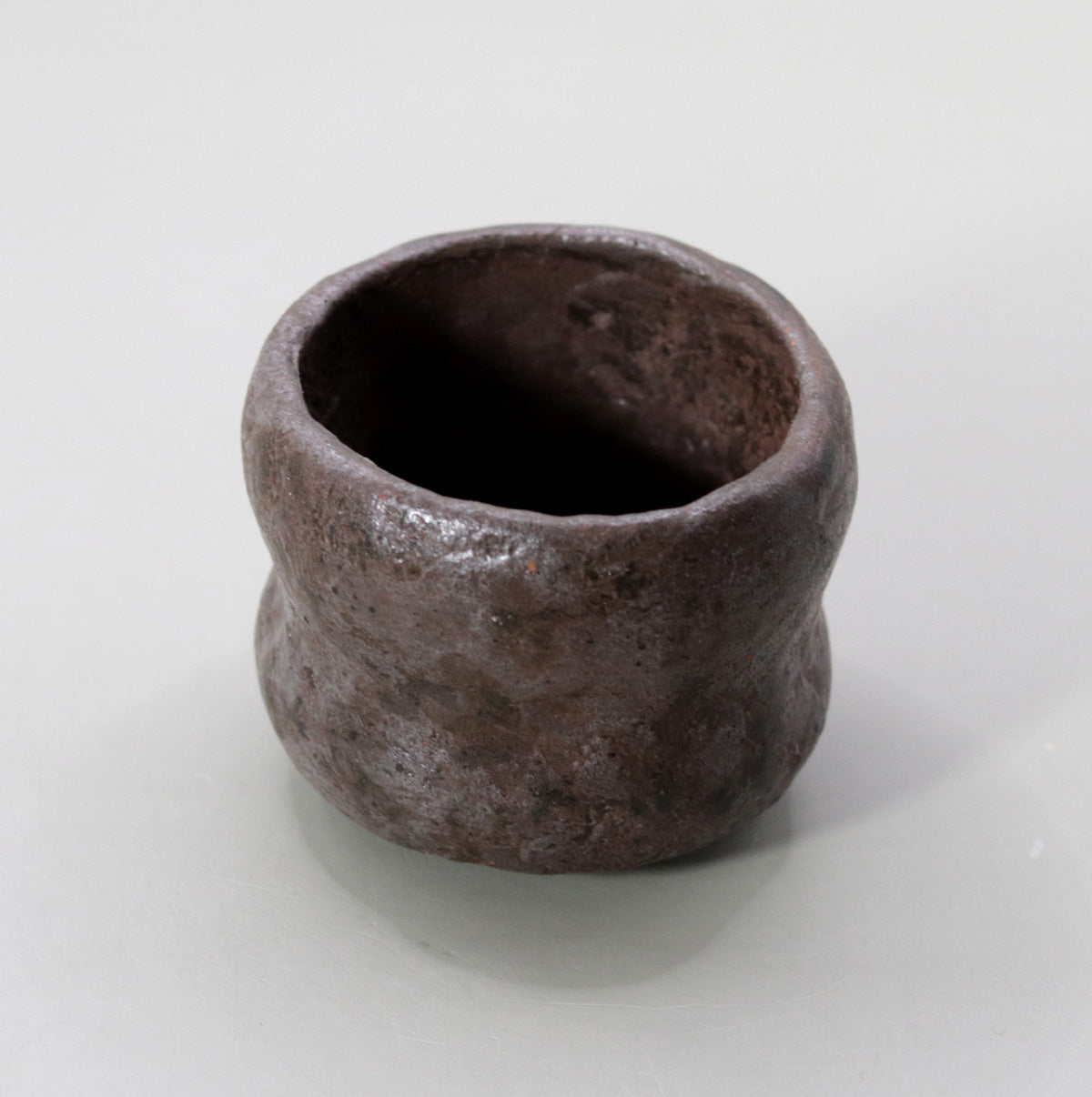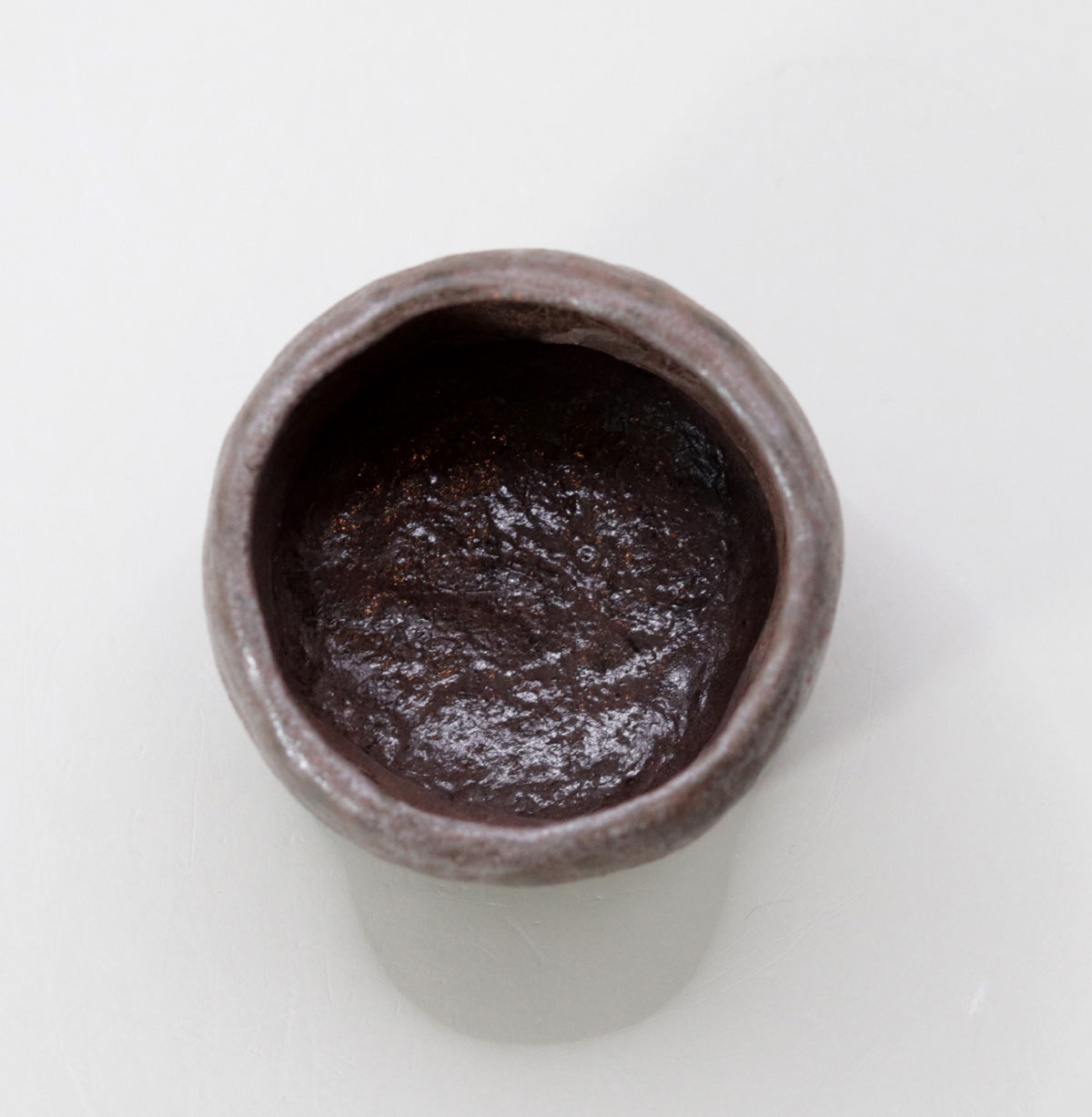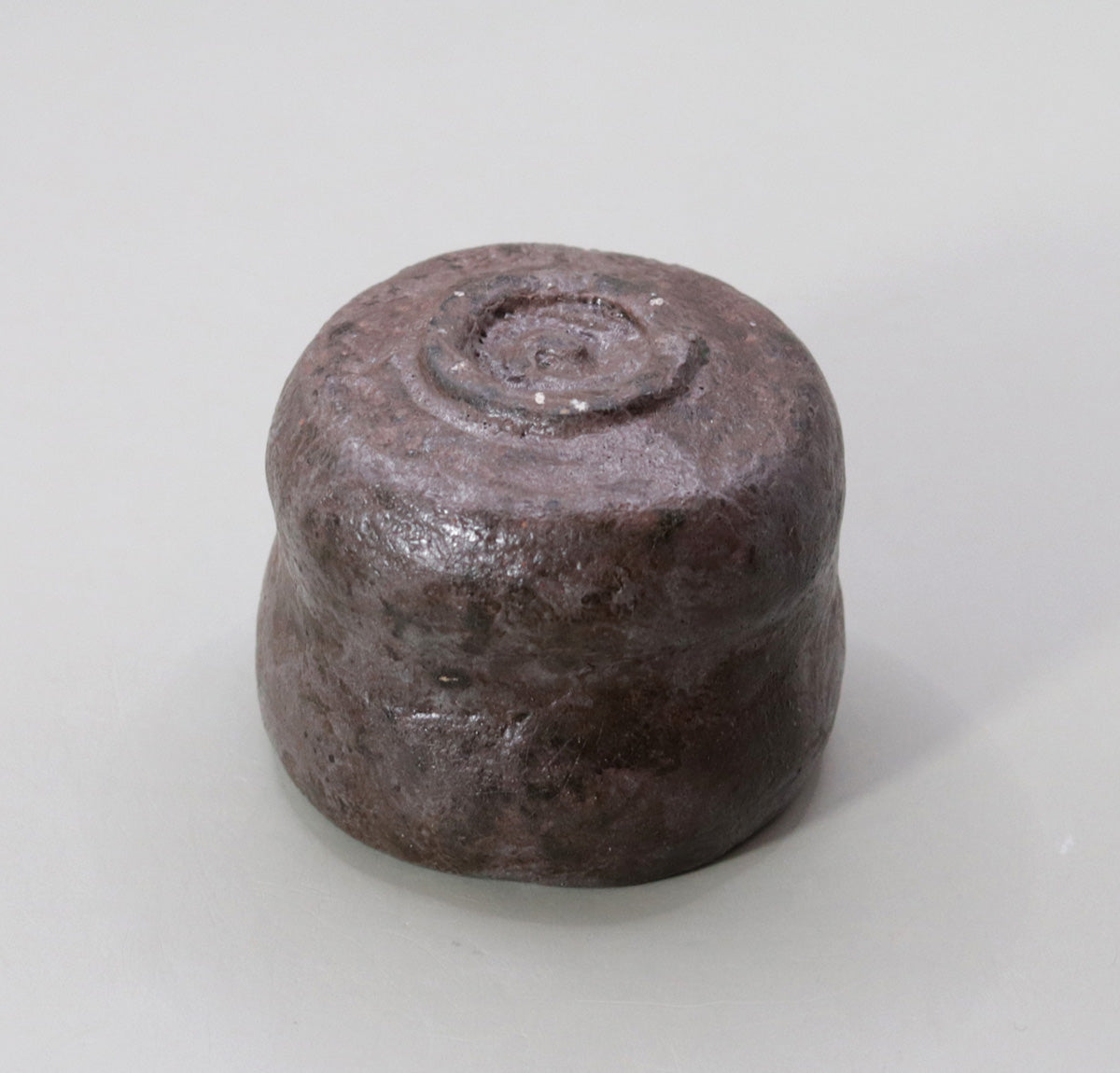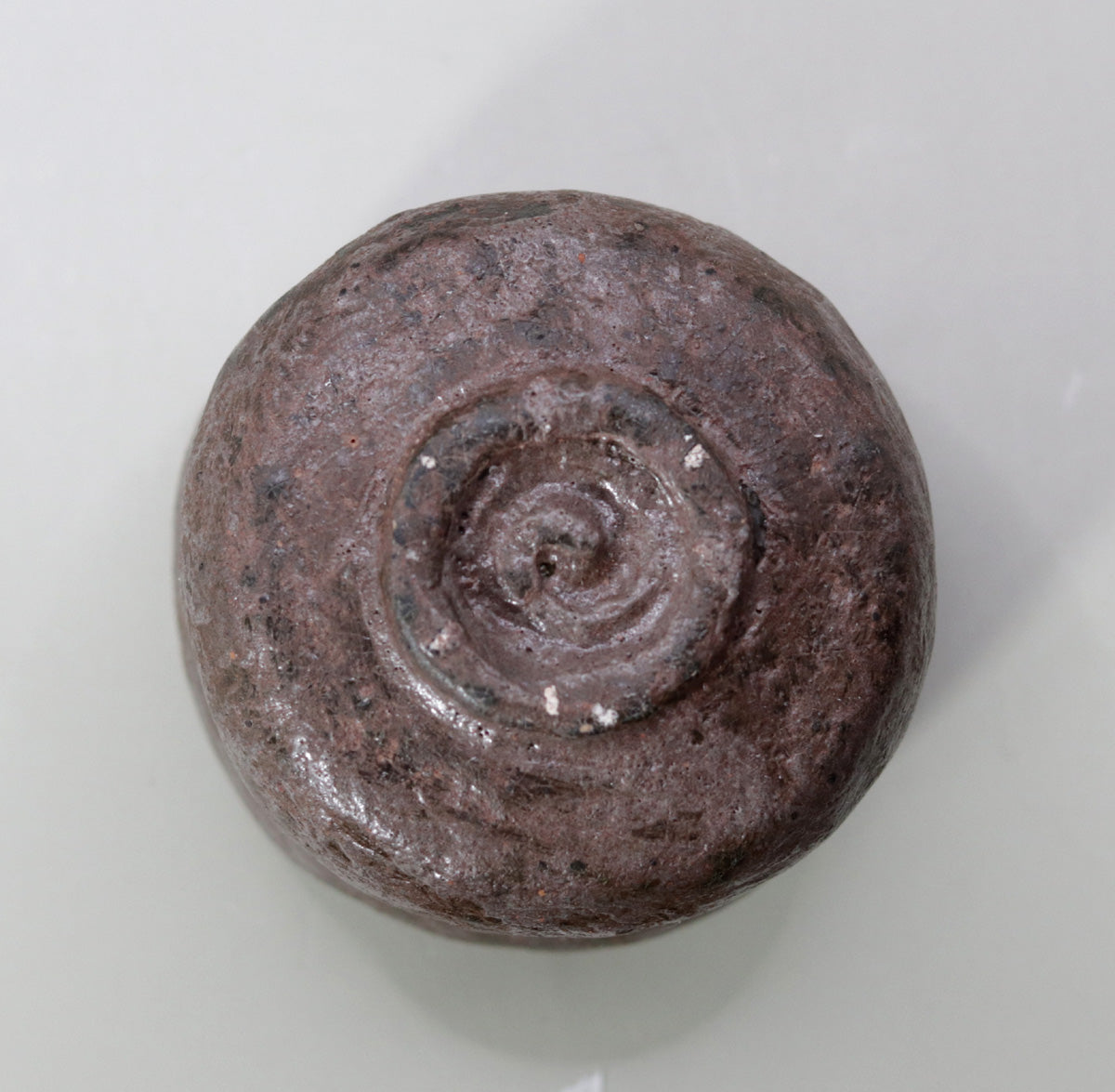IMAYAKI sake cup by Yanashita Hideki
IMAYAKI sake cup by Yanashita Hideki
Couldn't load pickup availability
Width 6.9cm Height 5.6cm
--Chojiro's "black" is now in the palm of your hand--
The "Ima-yaki Black Sake Cup" by Yanagishita Tokiki is a work inspired by Chojiro's black tea bowls and reconstructed for the modern era as a small sake cup. By incorporating the spirituality and beauty of the form embodied in the tea bowl into a format closer to everyday life than that of a sake cup, a quiet masterpiece was born that lies somewhere between practicality and art.
The greatest attraction of this sake cup is the unique black color that appears on its surface.
It is not simply jet black, but a warm black with a slight reddish hue, with a depth reminiscent of the surface of charcoal, and it shows different expressions depending on the angle and amount of light. It is not black as a color, but "black as a landscape" - it has the power to quietly stimulate the imagination of the user.
The expression that remembers the firing process
This piece is fired for a short time at a relatively low temperature, following traditional methods. This firing process causes the glaze to shrink slightly and leave slight irregularities, resulting in a "natural fluctuation" on the surface of the piece that deviates from the intended homogeneity. The black glaze also has varying shades, allowing the brownish base to peek through in places, giving this piece a unique sense of serenity and reverberation. The overlapping of these subtle expressions gives the piece depth, creating a comfortable sense of tension both visually and tactilely.
Feel the calm and beauty in your hands
The rim is slightly thin, which makes it particularly comfortable to drink.
The moment you touch the rim of the sake, the smoothness of the glaze and the warmth of the clay add depth to the flavor of the sake. The shape fits naturally to your fingertips. This structure was designed not only for aesthetic beauty, but also for the feel in the hand and ease of use. Although the vessel is small, it has a large presence, and every action from pouring the sake to finishing the drink is imbued with a quiet beauty.
Reinterpretation of "Ima-yaki"
This pottery was created for the tea ceremony in the Momoyama period, and its essence lies in the spirit of "one bowl, one encounter." Yanagishita Tokiki created this sake cup not by simply imitating that tradition, but by considering how to face and utilize it in the modern era. The word "ima-yaki" embodies the connection from the past to the present, and the challenge of new expressions that correspond to the times. This work maintains the soft, enveloping texture, but is finished in a sharper, clearer shape to suit the purpose of the sake cup.
The Eyes of Toki Yanagishita and His Philosophy on Pottery
Yanagishita Tokiki built a kiln in Iga and has been working on various expressions of traditional pottery such as Yakishime and Oribe. The coexistence of "beauty for use" and "beauty for looking" is a consistent theme in his works. The Ima-yaki Kuroguinomi is not just a sake cup. It fits in the palm of the user's hand and is used naturally in daily drinking, while at unexpected moments making you feel "something" deep inside the cup. It is designed as a vessel that lives in the "space between the everyday and the extraordinary." With the spirit of the tea ceremony as a background, this work, in which the material, firing, and shape are quietly combined, makes the act of drinking itself a little more special. Every time you pick it up, you see a different view, and the more you use it, the more it grows into your own vessel--- Its solid feel and gentle presence make it a small work of art for those who want to cherish quiet time.
Hideki Yanashita Profile
Ceramicist 1967 –
Born in Tokyo, Yanagishita is currently based in Iga, Mie Prefecture. Fascinated by pottery from the Momoyama period, he embarked on the path of ceramics. After training in Shigaraki, he built his own anagama kiln in Iga, Mie Prefecture, and opened the Kanda Kiln. Under the tutelage of Sadamitsu Sugimoto, Yanagishita has been creating a wide variety of works , including Raku ware, Yakishime, Ido, and Oribe, while deeply exploring the world of wabi-sabi from his own unique perspective. An important theme in Yanagishita's creations is the quest for new heights , born from the incorporation of modern materials and unique approaches while deeply studying the techniques and spirit of his predecessors. His works question essential beauty that is timeless, and invite the viewer into a deeper world of art.
Base of operations : Iga, Mie Prefecture
Share
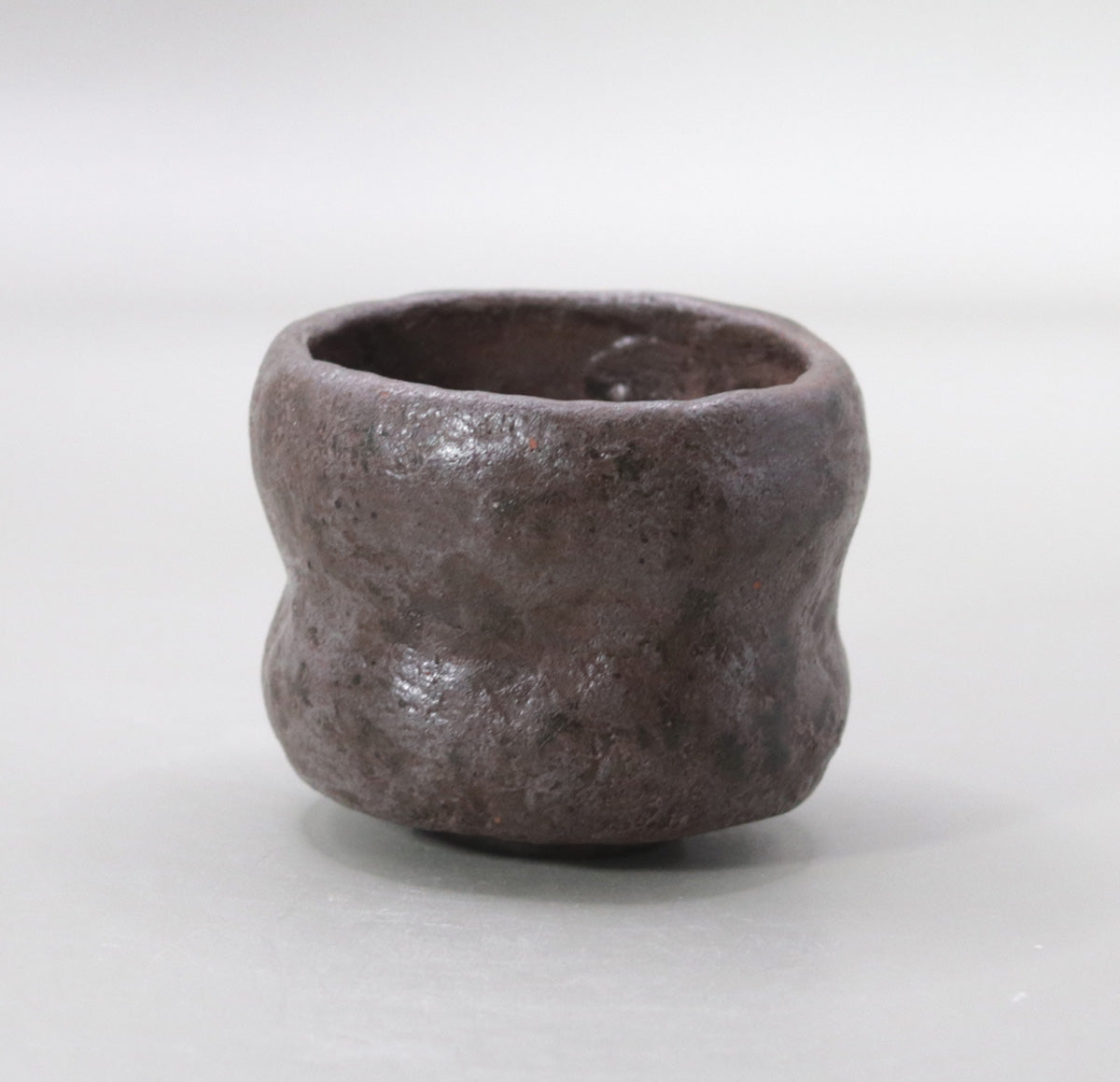
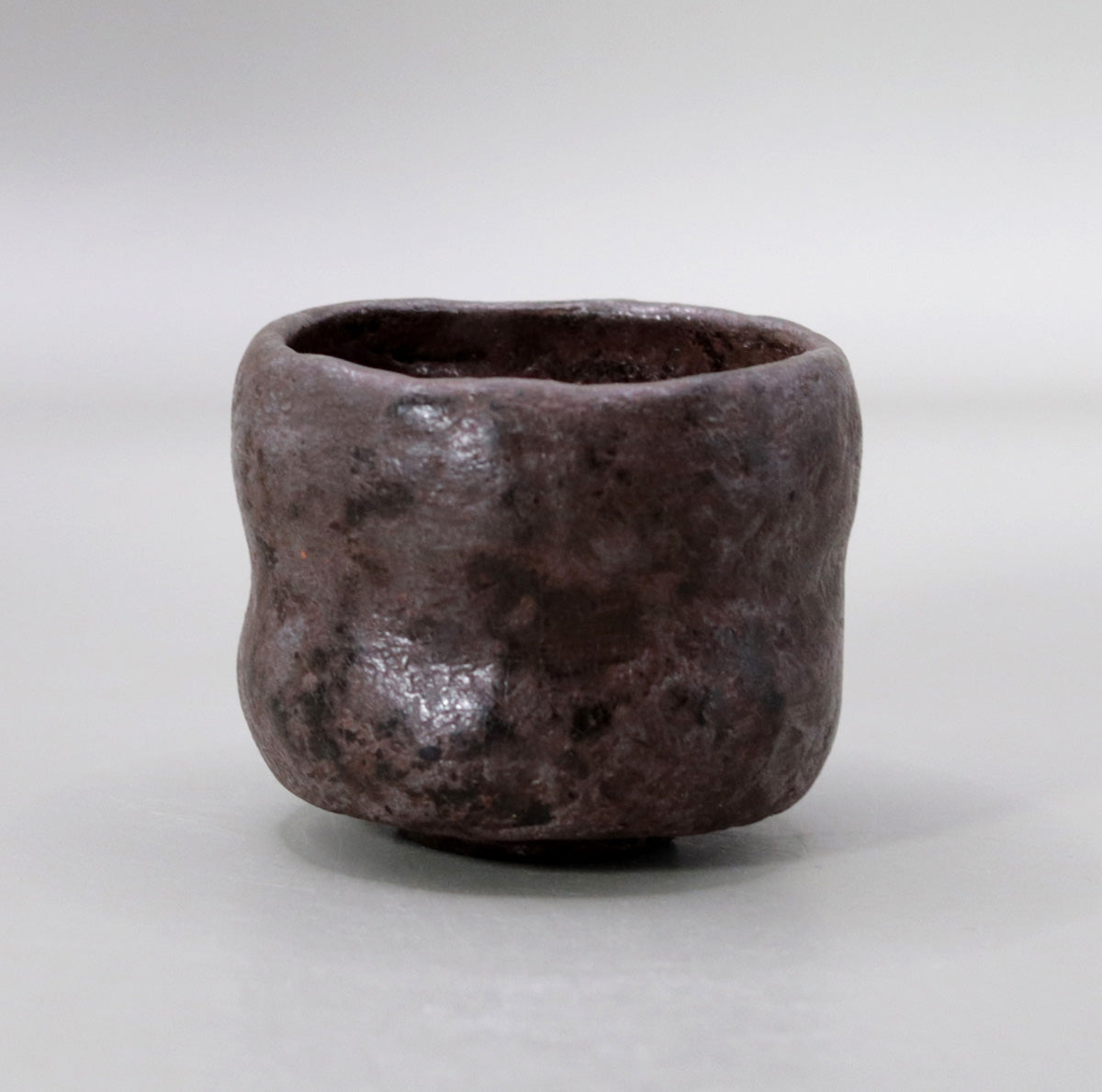
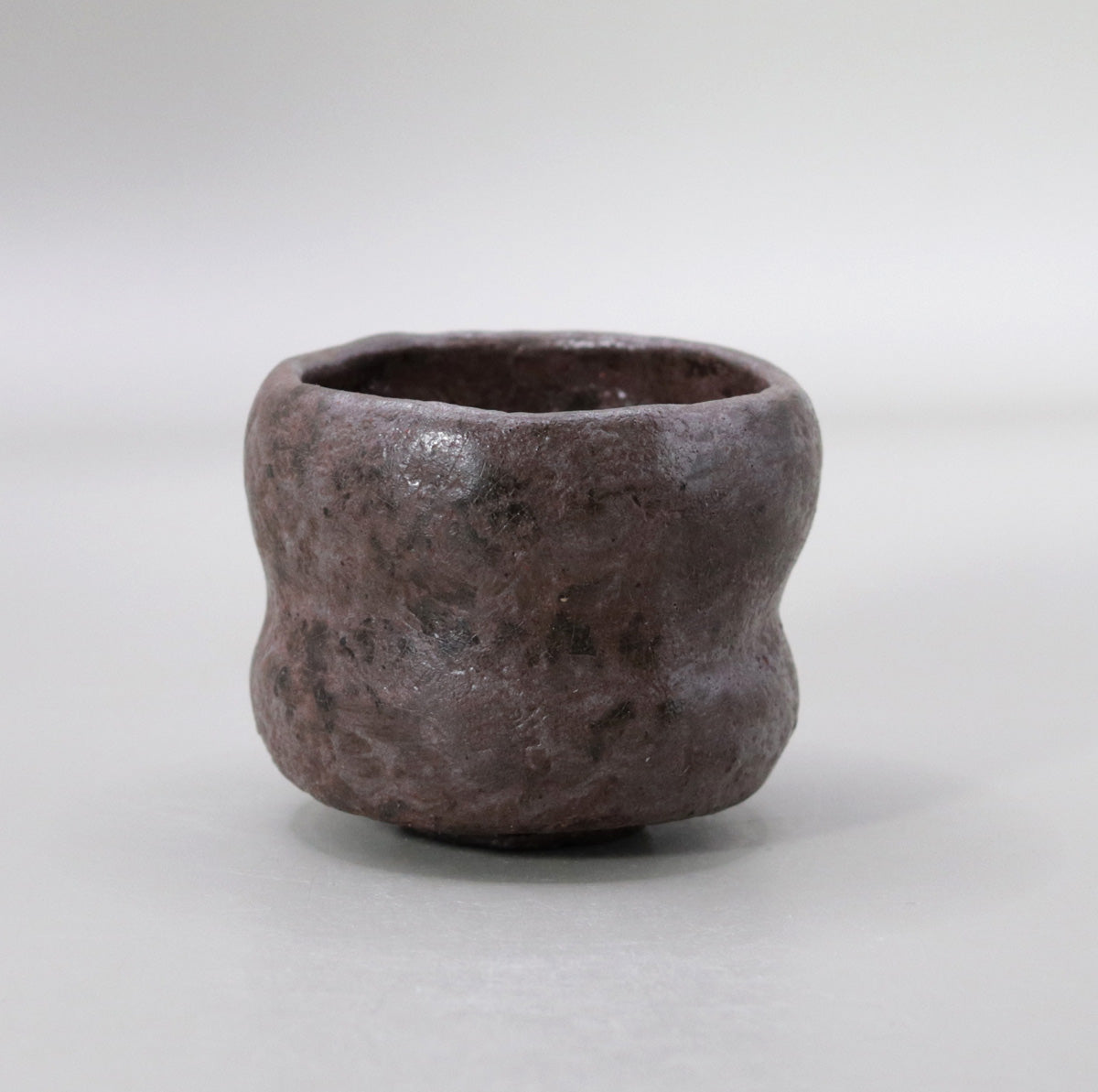
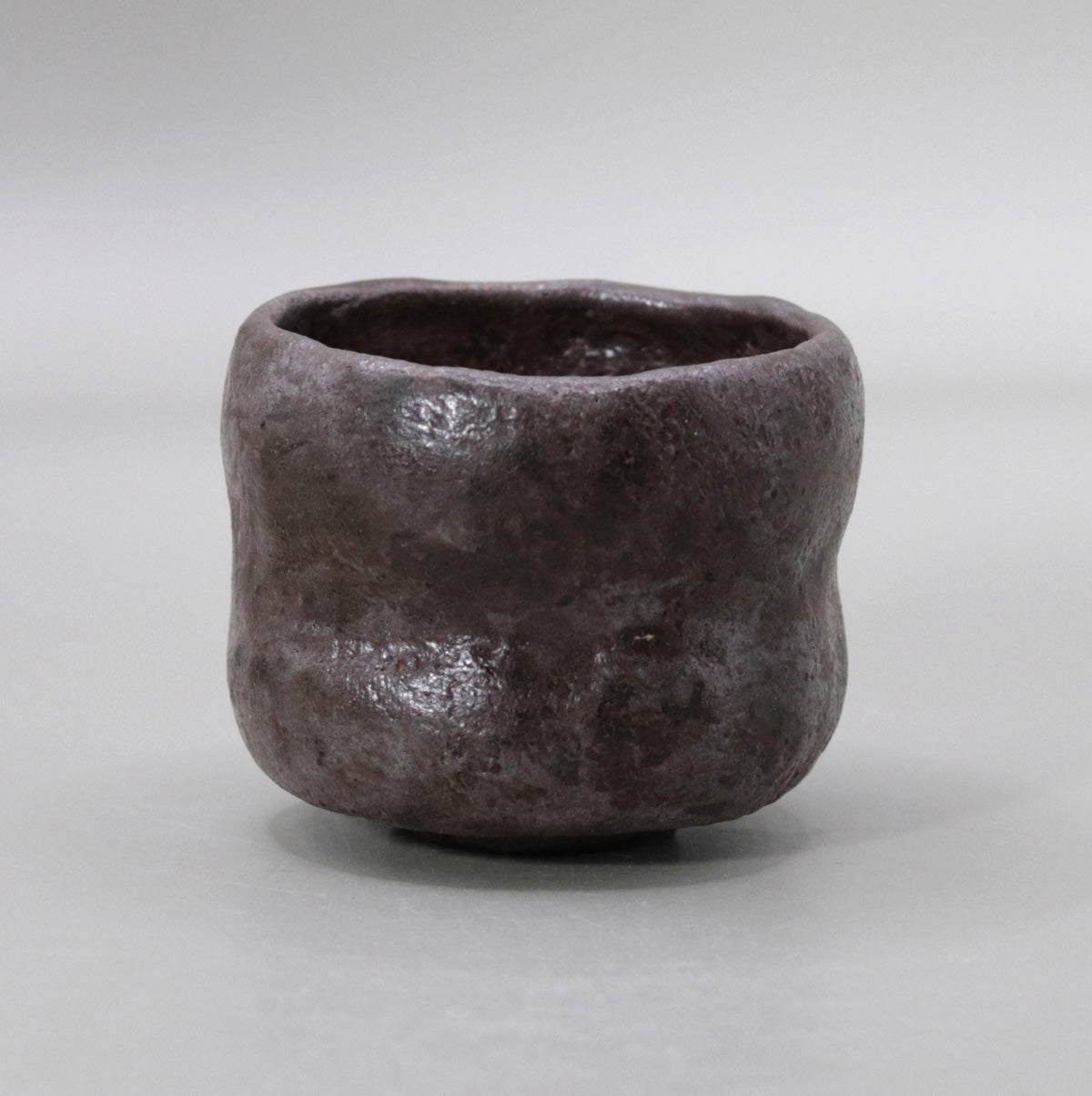
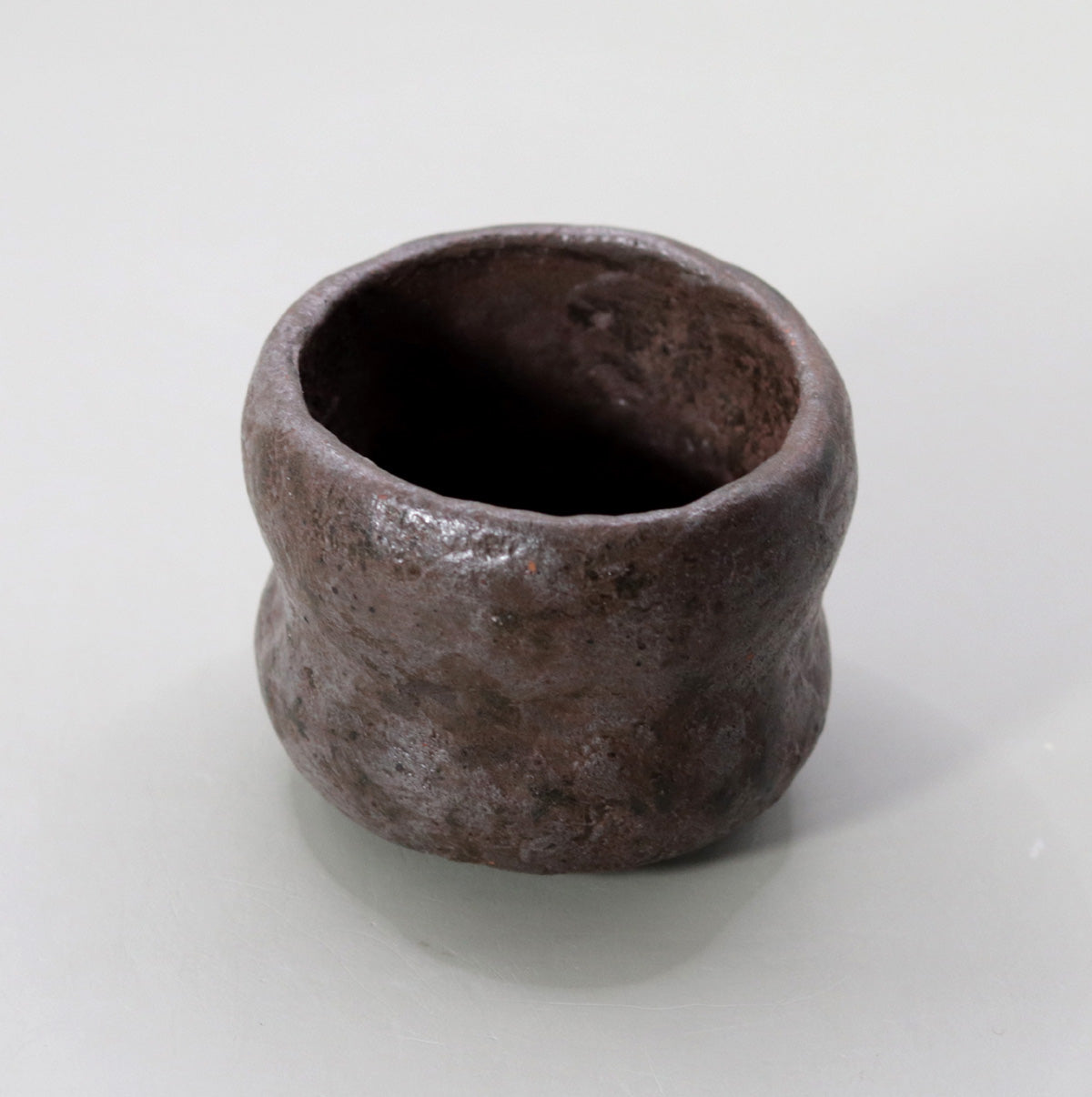
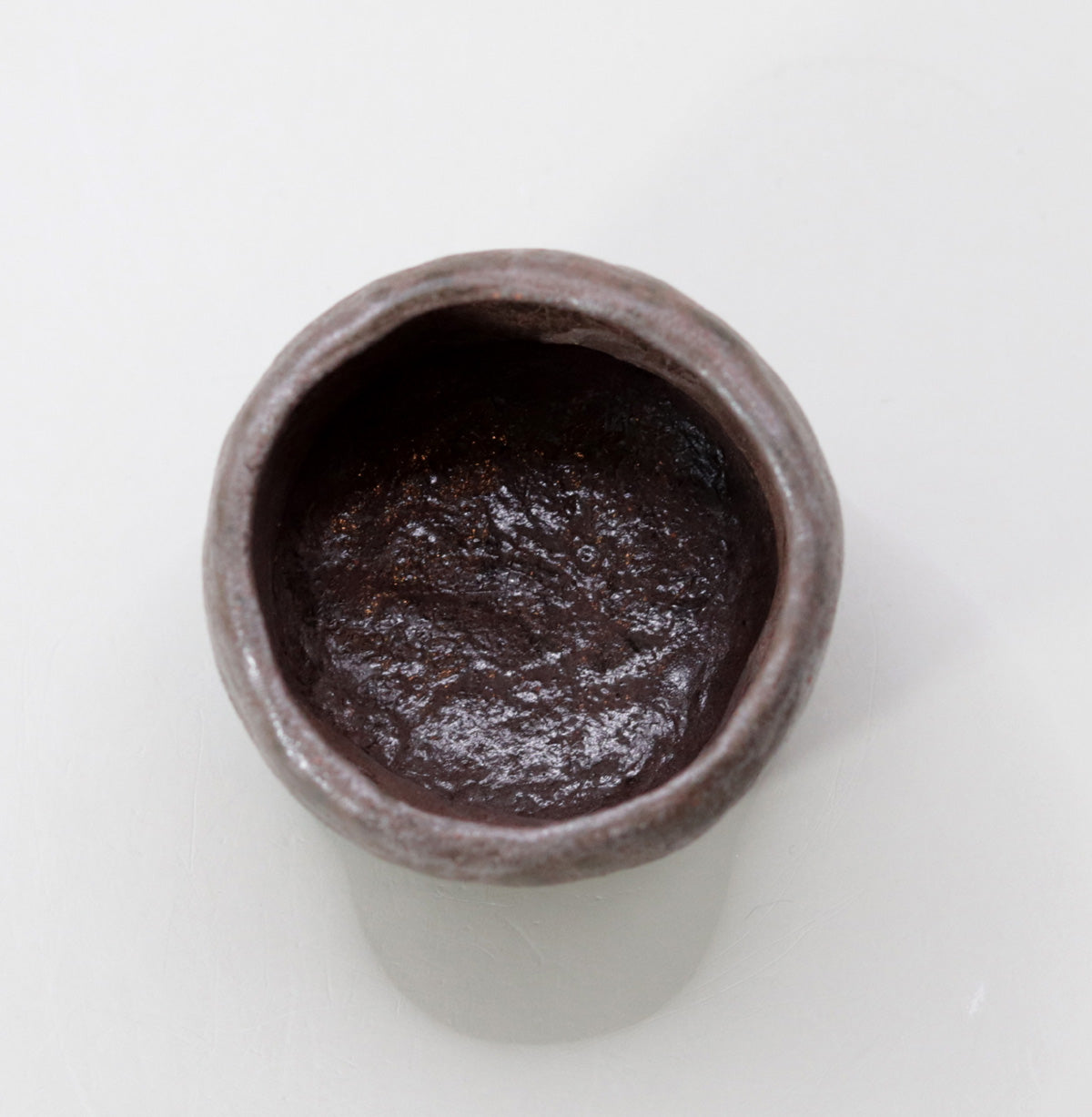
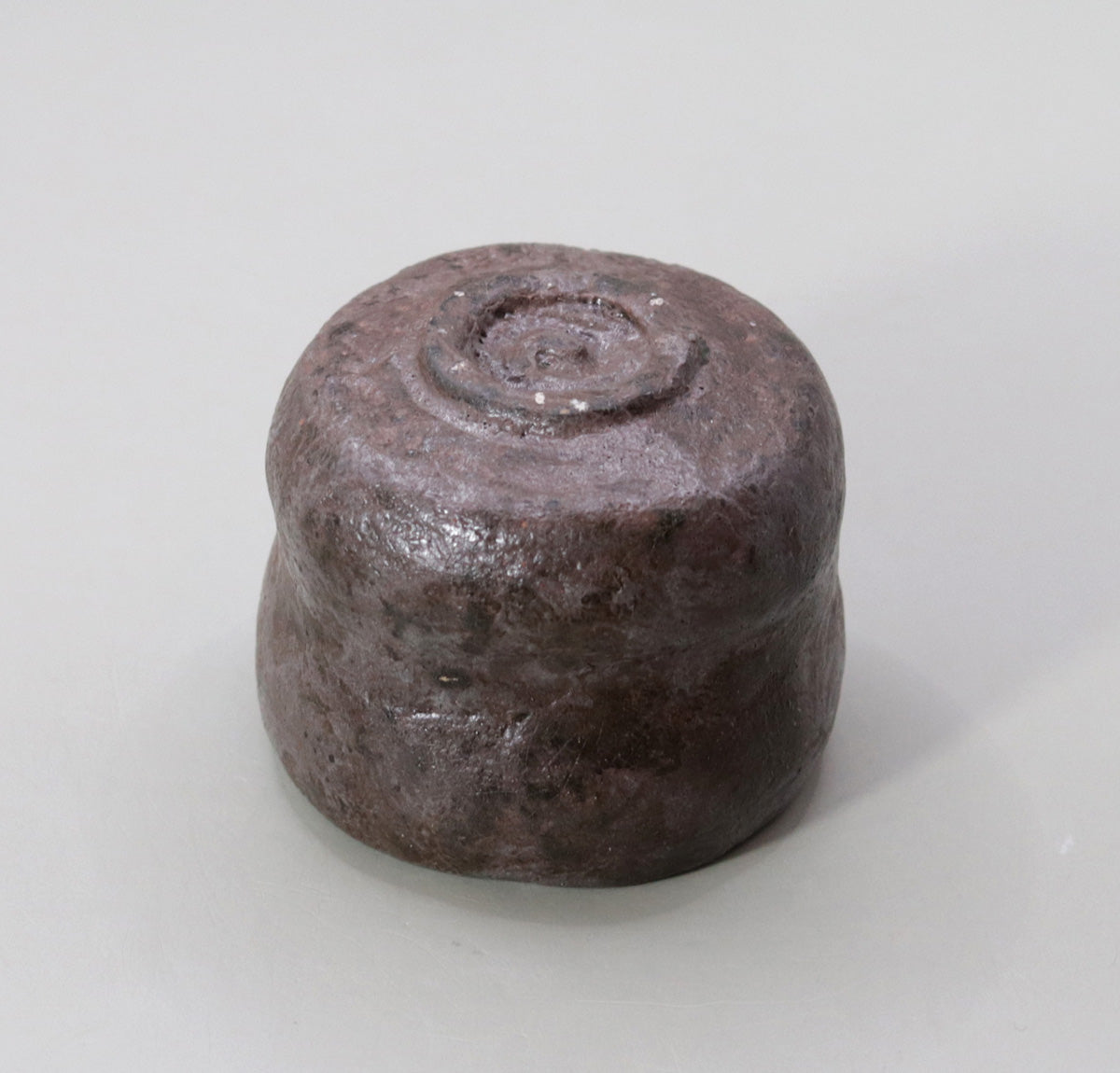
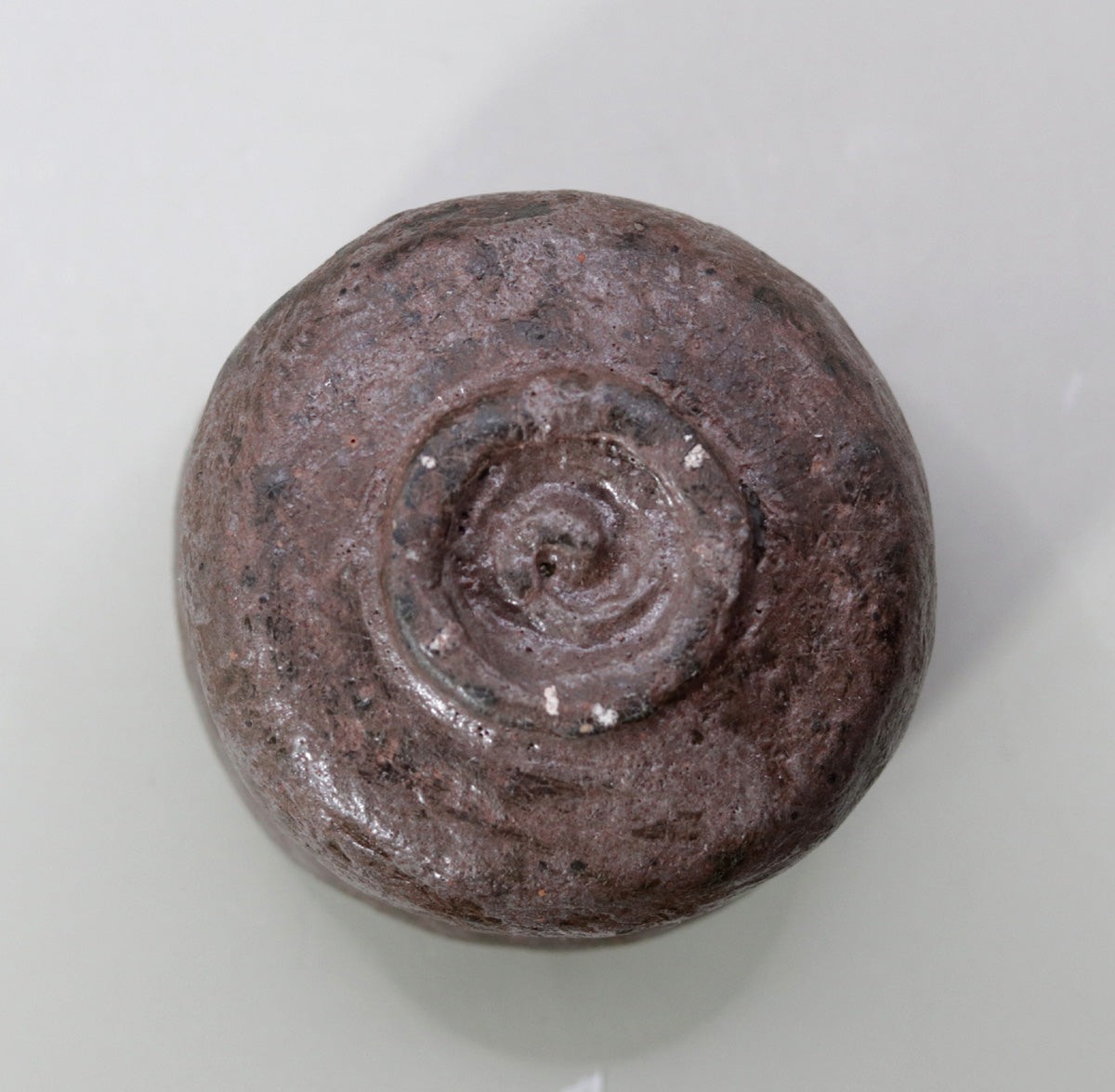
Multi-Column
-
[I will send it to you quickly and carefully]
We carefully package each product in a way that suits it best.
Also, delivery times vary depending on the piece (vessel, etc.).
Items that already come with a box will be shipped within 1-3 days of the order date.
For items that require a box to be made after your order, it will take approximately 30 days for production to be completed and then shipped.
In either case, once we have confirmed your order, we will contact you by email to inform you of the delivery date.
-
[Requests when purchasing pottery]
Even products that look the same may differ slightly in color, shape, size, etc.
The way the glaze is used, the power of the kiln, the firing method, the season, and the humidity also affect the appearance of the pottery.
Please understand the individuality of each piece of pottery and enjoy the unique warmth of handmade.

